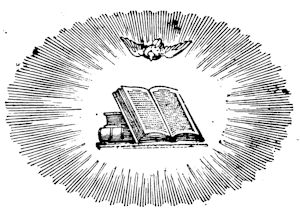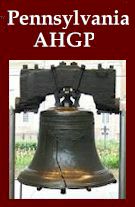Societies and Churches
Society Of Friends

The Society of Friends, whose peculiar tenets were brought to
this country, by the peace loving William Penn, has about ten
spacious Meeting Houses for worship, in this city, and many
others in the immediate vicinity. Their first place of worship
was at Kensington; afterward a building was erect at the comer
of Second and Market Streets, which was finally removed, in
1808. The Society was divided, by a small secession from their
members, by a part, who styled themselves "Free" or "Whig"
Quakers, who erected a separate house of worship, at the comer
of Fifth and Arch Streets: this occurred during the Revolution,
and was prompted by a desire, to take, on their part, an active
stand, in favor of the principles of Independence. Another
division has occurred, within a few years, which has ranked the
Friends, into two classes, throughout the whole country one of
which is denominated "Orthodox" and the other, "Hicksite," from
the improvements, and peculiar preaching, of Elias Hicks,
deceased.
As citizens and as a religious body, the Friends (or Quakers)
have no superiors, if they even have equals; their course is
marked, by a peculiarly correct deportment, studying neatness,
without ostentation; they ardently pursue all the solid Improve'
menu of the mind, and reject everything frivolous, and
unnecessary.
They keep a strict watch over the moral deportment of their
Members, and study to accelerate their advancement, in every
laudable undertaking.
Marriages are contracted, with the consent, and approbation of
their regular Meetings, and solemnized before the whole
congregation. Their Poor are always provided for, by the Society
and they never become a public charge, if they have a good
standing in the Society.
Their peculiar tenets may be found, in the Theological works, of
William Penn, Charles Fox, and other distinguished writers, of
their times; men, not surpassed by any, for meekness and deep
knowledge of the Sacred writings.
Society of Methodists
The success of this sect in America is almost unparalleled, they
probably, at this time, outnumber any other. About 1766 Philip
Embury, a local preacher arrived in New York; assisted by
Captain Webb, of the British navy, he formed a small society.
About the same time, Mr. Strawbridge, also a local preacher,
settled in Frederick county Maryland, and formed a small society
there. In 1769, Joseph Palmer and Richard Rankin, two regular
Methodist Missionaries arrived. In 1773, the first Methodist
Conference was held in Philadelphia, numbering only ten
itinerant ministers, including three English Missionaries; at
that time the church contained 1,160 members. During the
Revolution, all the Missionaries returned, except Francis
Asbury. The operations of the Gospel at this time, were much
restricted, and most of the Episcopal Churches were shut, for
want of ministers. In May, 1783, the Methodist Conference sat,
at that time the Society consisted of about eighty effective
travelling preachers, and 13,740 Church members. The General
Conference minutes for 1838, exhibit the following condition of
the Society; Five Bishops; Twenty-eight Conferences; Three
Thousand One Hundred and six itinerant preachers; Two Hundred
and sixteen superannuated ministers; 5792 local preachers; and
686,574 Church Members.
Their ministers are steady to their purposes, nothing diverts
them from their duties; and wherever settlements are extended,
there their ministers are found, preaching the gospel; and the
gospel is now preached by them, west of the Rocky Mountains.
Wherever the English language is spoken in America, the country
is laid out in districts and the districts into circuits; and
appointments are annually made for each circuit.
Methodist peculiarities have everywhere been spoken against, by
those who know the least of them. The membership is divided into
classes, one is appointed as a leader; these leaders meet the
preacher, at stated times, to consult on the welfare of the
Church, under their care; these classes are not arrangements for
confession: nothing is ever said in class-meeting, that could
offend the most delicate ear; but these, with all other private
meetings of the Church, are intended, as means of Grace,
calculated to instruct the ignorant, strengthen the weak, to
reclaim the backslider, and to build up believers: nor are their
private, meeting so exclusive, but, that any well-disposed
person may, on admission, have admission into any of them.
As to their Doctrines, they preach Free Salvation, by Faith to
the Lord Jesus Christ. They often declaim against extravagance
and superfluity in dross, and needless ornaments and recommend
to their hearers, the propriety of giving to the poor, or to the
propagation of the Gospel, rather than indulging in needless
ornaments: but, uniformity of dress has never been obtained
among the Methodists. As faith cometh by hearing, and many
sinners never go to Church to hear the Gospel, occasionally Camp
Meetings are resorted to, in order to bring them under Gospel
influence; and although some may misbehave at these meetings
yet, many who go to scoff, return home to pray.
It may now be said, emphatically, that the poor have the gospel
preached to them. As high as their standard of Christian
morality is and as strict as is their discipline, it is none
other than is found between the lids of the Bible, which they
take as their guide, in faith and practice.
The Methodists attend much to Sunday Schools and wherever
practicable, Children are collected, and not only taught to
read, but are also taught their duty, towards God and man: and
at this time, in our city, there are nearly Fifteen Hundred
private members of the Church, engaged as superintendents and
teachers, in Sunday Schools, having perhaps, near Ten Thousand
children, under instruction.
The Methodists have many Missionary Societies, by whom,
considerable sums of money are raised, and appropriated towards
maintaining ministers to preach the Gospel among them: They have
many Missionaries in foreign lands, viz: Africa, South America,
&c. And as they believe, the savages must be Christianized,
before they can be civilized: They have many Missionaries among
them who have been, more or less successful: These Missionaries
are upheld, at an expense of above $100,000 per annum.
Indeed, the Methodist system is one great Missionary concern,
which maintains between three and four thousand Missionaries,
and their families, with no other funds than the freewill
offerings of their members, and their friends, except about
$2,000 per annum. The proceeds of the chartered fund, and the
profits of an extensive Book Concern, begun without capital of
from 15 to $18,000 per annum. These sums added together, and
divided among between three and four thousand itinerant
Ministers, will give each one, about as much as will annually,
purchase him a hat.
The whole number of members of the Methodist Episcopal Church,
in the United States, is now, 728,625, without including those
in Canada. The total increase, from Dec. 1837, to 1838, was
59,572.
In 1816, the colored Methodists of this city, withdrew from this
Society, and placed themselves under the government of their,
own color.
More information may be obtained, by consulting Bucks
Theological Dictionary, on the Methodists Discipline; the latest
edition may be found, at the Methodists' Book Store, North
Fourth Street, below Arch St.
St. Johns' Church
This splendid edifice is situated upon Thirteenth Street,
between Chesnut and Market. It is one of the finest specimens of
Gothic architecture in the city. It is built in imitation of
marble. The interior is decorated with some fine Scripture
paintings, by Monachesi, and overhead dependent, from the
opposite sides, are representations of the Angels' proclaiming
the glad tidings of eternal truth. The altar is one of great
magnificence having been recently brought to this country, from
Rome. When lighted up so rich are the appendages that it
presents to the eye, the splendid appearance of solid gold.
The sanctuary is very capacious and beautiful, occupying the
entire front, facing the audience. It is enclosed with a
magnificent railing, running the entire length of the sanctuary.
Behind the altar is a fine painting, in fresco, occupying the
entire niche, representing the opening of "Seven Seals." Either
side of the sanctuary are also decorated, with appropriate
Scripture paintings. On the right and left are entrances, for
the bishops, priests, and others, who administer the services of
the sanctuary. The Rostrum is constructed upon wheels, and is
placed in front of the audience, immediately preceding the
entrance of the preacher.
In the front of the organ, there is a large and beautiful
painting, by Otis, being a copy from West's celebrated painting
of "Christ Healing, in the Temple."
The Gothic windows of this Church, present a solemn scene. when
the wax candles are shining, as they are, of (variegates)
stained glass, of every hue and color imaginable; There is
connected with the Church, a good School, and an Orphans Asylum,
kept in the Gothic Mansion, on Chesnut Street.
This beautiful Church is one of the most splendid in the
country. It will probably contain about 2,000 persons, and is
generally, filled four times every Sabbath. It cost over 70,000
dollars.
History of Philadelphia

|
![]()

![]()
